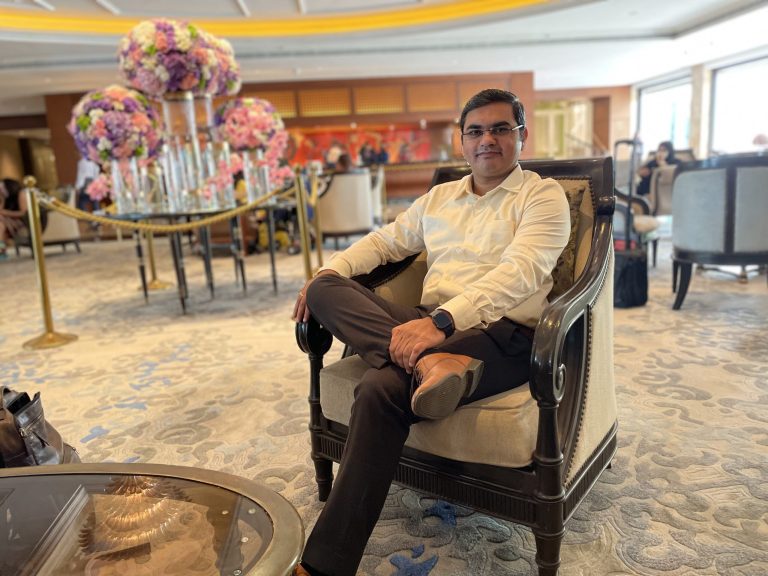Dr. Ameet Patil, Founder & CEO of Ecobillz Private Limited
26/11 in a sense was the turning point for the hospitality industry in general and India, in particular. The one silver lining that came out of that terrible tragedy – the cost of human life which can never be quantified – was the increasing adoption of technology to, first and foremost, make the guest feel secure and safe and then, to make them feel special.
So room keys gave way to smart cards, which also doubled up to provide controlled access to the elevators for enhanced security. Today, in any star-rated hotel, a guest is allowed access only to the floor where he/she is staying and to the hotel’s common areas – with no non-resident guest allowed access to any of the floors via the elevators.
Pre-filled registration forms are another example of digitisation at work, which has truly enhanced guest experience at the time of check-in. There was a time when the guest checked into a hotel, he/she had to physically fill in all the details in the registration form, which took several minutes. Imagine arriving at your destination after a long-haul international flight and then standing at the hotel’s reception filling up personal details – all this while you could be tired, hungry or just wanting to relax in the comfort of your room as quickly as possible. And since the front desk or the hotel reception was usually manned by three staff members, heaven help if more than that number of guests decided to check in simultaneously – and an equal number decided to check out at that moment!
In fact, large group check-ins could take up as much as half an hour as the group leader had to fill out details of each group member or hand over their personal identification documents such as passports to the hotel front office staff – which also raised the risk of the documents getting misplaced. As an aside, hotels used to have the practice of offering welcome drinks – usually a mixed fruit punch – to guests checking in to help alleviate the ‘suffering’!
Today, a guest can ‘waltz’ right up to the hotel reception’s front desk, sign the pre-filled registration form with the front desk staff scanning an identification document and handing it back right then and there, get the room key and be in the room in just a few minutes. No more long queues at the hotel reception of guests waiting to check-in.
Nowadays, registration forms aren’t just pre-filled, but also e-mailed or sent electronically to the guest before check-in to enable the guest to not just fill in details of their personal identification documents, such as a passport or an Aadhar card but also sign them and send it back to the hotel before physically checking in. At the time of physically checking in, the hotel staff will just verify the details of the guest’s personal identification document and hand over the keys – making check-in a seamless experience.
Moreover, with digital records, guest preferences are accessible easily to the hotel staff which can create a more personalised experience for repeat visits by the same guest. For instance, a guest may have a preference for a room on a higher floor – which could be known easily by accessing the guest’s past history of staying at the hotel.
Now, if the entire guest history was preserved manually, on paper, stored in files, imagine digging through reams and reams of paper to get the desired information – that is, if some staff member with excellent memory was able to recall if a guest had stayed previously or not. Knowing that the hotel remembers their preferences certainly makes the guests feel special and valued.
Digitisation also offers benefits for the hotels – as per statutory requirements, hotels have to preserve guest registration forms for at least six years. Paper records not only entail a huge expense – a typical 300-room five-star hotel saves INR 15 lakh annually on paper costs — but also occupation of physical space – space that in metro cities like Delhi or Mumbai is an asset going waste.
It’s not just the check-in experience that’s gained tremendously with increasing digitisation – even dining-in at hotels has gone digital. For example, earlier, resident guests were required to sign a bill at the end of their meal to enable the restaurant to add the charges to their room bill — in fact, it was left to the front desk to manually sort out the bills to see which charges were included in the room tariff – such as breakfast, which is commonly part of room tariffs – and which were not, such as lunch, dinner, or room service. These days, all that a guest needs to do is inform the room number, which the restaurant staff enters into their handheld device/computer to not just get the guest details and meal plan but also his or her photograph – with the bill automatically credited into the total charges, to be settled at the time of check-out.
However, certain trends in digitisation, which had become fashionable during the pandemic, are slowly fading out. One such example is that of digital menus, that were available by scanning a QR code. These are making way for the return of physical menus, especially in fine dining and speciality restaurants as guests who come there aren’t just coming for a meal but also for a dining experience – which, in the hospitality industry, includes a personalised human touch!


